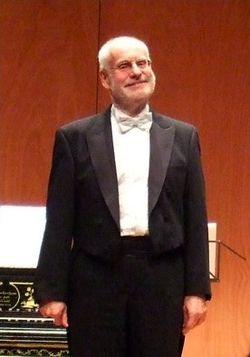History
"Scholars and music lovers! We want to give Genoa, our beloved city whose beauty expression is inferior to no other one, a permanent orchestra being the center of a new and powerful movement of aesthetic education."
Among the oldest concert societies in Italy, Giovine Orchestra Genovese was founded in 1912 in Genoa by Giovanni Semeria, a priest, writer and public speaker, one of the greatest Italian catholic personalities of the 20th century. [3]
The origin of Giovine Orchestra Genovese is linked to the birth and the increase of concert societies and musical associations in Italy. By the end of the 19th century symphonic and chamber music, previously ignored or underperformed there, partly due to Opera long-time domination, saw a considerable audience boost. During these years Genoa, one of the most industrialized cities in Italy, refined its cultural citylife. The main location of musical performances was the Teatro Carlo Felice, built in 1824, but a city permanent orchestra had yet to be founded.
The actual purpose of Giovanni Semeria and the composer Mario Barbieri, Giuseppe Martucci's pupil, was to create a permanent orchestra and a musical society at the same time. That was to be formed both by professional players and "active members", the latter being culture high-profile personalities, chamber music lovers and concert regular attenders who would gave their financial support, in spite of directly joining the orchestra.
The original statute established Giovine Orchestra Genovese as a "musical culture association" and set up its purpose: "playing instrumental music and promoting or encouraging every valid project being able to spread musical culture". Arturo Toscanini became the Honorary President in 1921. [4]

During the 1920s the association hosted many internationally renowned artists such as Mieczyslaw Horszowski, Wilhelm Backhaus, Vladimir Horowitz, Walter Gieseking, Nathan Milstein and Francis Poulenc, progressively turning into a society specialised in producing and organizing concerts rather than a proper orchestra with its own players. The orchestra itself would ultimately break off after World War II.
Concert programs in the 30s grew up both musically and artistically, thus beginning to offer some richer repertoires played by even more prestigious performers. However, Italy's entrance into World War II caused a serious decrease of these activities: frequent allied bombings on Genoa led the association to transfer its events to Rapallo until 1944, before completely stopping them all.
Giovine Orchestra Genovese was successfully revived by Arturo Benedetti Michelangeli's piano recital in 1945 and quickly became one of the most recognized international music societies. Yehudi Menuhin, Andrés Segovia, Mstislav Rostropovich, Dinu Lipatti, Sviatoslav Richter and Benjamin Britten were only some of the "big" performers playing in Genoa during the post War period.

One of the great contributions of the association has been the "talent scouting" of new talented artists, many of whom had previously won several international competitions: Maurizio Pollini, Martha Argerich, Uto Ughi, Salvatore Accardo and many others. Still today, the association continues to give hospitality to the winners of the major music competitions, especially from the International Chopin Piano Competition and the International Tchaikovsky Competition: Grigory Sokolov, Vladimir Ashkenazy, Viktoria Mullova, Krystian Zimerman and many other globally renowned musicians.
Starting from the 1960s, Giovine Orchestra Genovese has begun to explore specific themes, sounds and concepts, as well as new composers' repertoires, resulting in peculiar differences and creative distinctions among seasonal programs: many concerts have been dedicated, for example, to Jazz music, American and oriental music, percussions, choral, avant-garde, electronic, experimental and even rock music, but also to particular chamber music formations such as violin and piano, cello and piano, trios, quartets (Shostakovich's, Bartók's, Beethoven's, Mozart's and Schubert's) and quintets. Notable performers of these genres have been Luciano Berio, Adriano Guarnieri, Al Di Meola and Richard Galliano. The genoese violin tradition, undoubtedly linked to violinist Niccolò Paganini, has always had a great influence on the majority of Giovine Orchestra Genovese programs, resulting in several concerts dedicated to virtuoso performers and to the winners of the Paganini Competition: Salvatore Accardo, Gidon Kremer, Leonidas Kavakos, Isabelle Faust and the current 1st prize In Mo Yang.
Since 1991 Giovine Orchestra Genovese has been organizing its main concerts at Teatro Carlo Felice. Other locations are Genoa Cathedral, Chiesa del Gesù, Conservatorio "Niccolò Paganini" and the Palazzi dei Rolli.
Aside from these ones, the association hosts its theatre shows and musical performances for children and students (named as Rassegne di Teatro Musicale per Ragazzi) at Teatro di Sant'Agostino.
In 1997 Giovine Orchestra Genovese was awarded the Premio Franco Abbiati della critica musicale italiana. [5]


